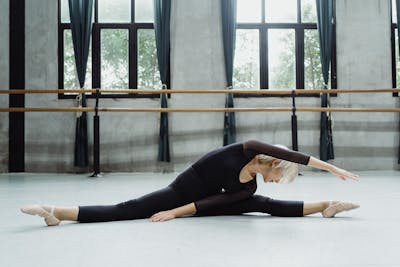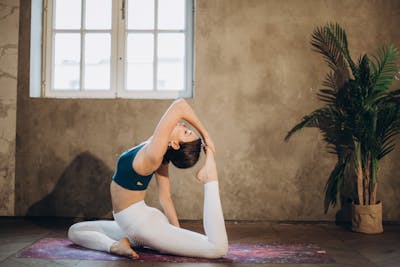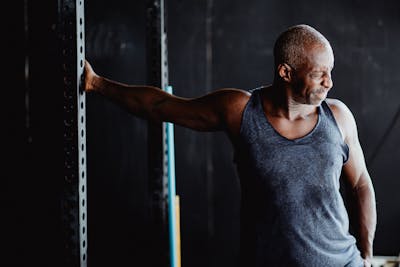The Winning Edge: Flexibility Exercises for Gymnasts to Boost Performance
Gymnastics is a sport that requires a combination of strength, balance, and flexibility. Among these factors, flexibility plays a crucial role in the success of gymnasts. Having excellent flexibility not only enhances performance but also reduces the risk of injuries. In this article, we will explore the winning edge that flexibility exercises provide for gymnasts and how they can boost their overall performance.
The Importance of Flexibility for Gymnasts
Flexibility is the ability of a joint or group of joints to move through a full range of motion. For gymnasts, being flexible is vital as it allows them to execute complex and graceful movements with ease. Here are some reasons why flexibility is essential for gymnasts to achieve their full potential:
- Improved Range of Motion: Flexible muscles and joints enable gymnasts to achieve a greater range of motion, allowing them to perform various gymnastic skills more efficiently and effectively.
- Enhanced Performance: By increasing flexibility, gymnasts can optimize their movements, leading to better technique, precision, and control during routines and performances.
- Injury Prevention: Adequate flexibility helps gymnasts avoid strains, sprains, and other common injuries that can occur when performing demanding and intricate movements.
- Muscle Balance: Flexibility exercises promote muscle balance by ensuring that opposing muscle groups have similar levels of flexibility. This balance is crucial for maintaining proper body alignment and preventing muscle imbalances that can hinder performance.
The Winning Edge: Flexibility Exercises
Incorporating specific flexibility exercises into training routines is essential to achieve the winning edge in gymnastics. These exercises target key muscle groups and joints involved in gymnastic movements. Let's explore some effective flexibility exercises for gymnasts:

1. Split Stretches
Split stretches, such as the front split and side split, are fundamental exercises for improving leg flexibility. These exercises target the hamstrings, hip flexors, and adductor muscles. To perform split stretches, gymnasts should:
- Start in a lunge position with one leg extended forward and the other leg extended backward.
- Slowly lower the hips and extend the front leg forward until a comfortable stretch is felt.
- Hold the position for 30 seconds to 1 minute, gradually increasing the duration over time.
- Repeat the stretch on both sides.
Split stretches should be performed regularly to gradually increase flexibility and achieve impressive splits.

2. Backbends
Backbends are excellent exercises for increasing spine and shoulder flexibility, which are crucial for gymnastic skills such as bridges and walkovers. Gymnasts can perform the following backbend exercise:
- Start by lying on your back with your hands by your shoulders, fingers pointing towards your feet.
- Press through the hands and lift the head, shoulders, and chest off the ground, arching the back.
- Extend the arms fully and push the hips forward, maintaining a strong core.
- Hold the backbend for 20-30 seconds, gradually increasing the duration with practice.
- Slowly release the backbend and return to the starting position.
Backbends should be practiced with caution and under the guidance of a qualified coach to ensure proper form and avoid injuries.

3. Shoulder and Wrist Stretches
Flexible shoulders and wrists are essential for gymnasts to perform various skills on apparatus such as bars and rings. Here are some stretches to improve shoulder and wrist flexibility:
- Shoulder Circles: Stand with feet shoulder-width apart and extend the arms out to the sides. Make circular motions with the arms, gradually increasing the diameter of the circles. Repeat in both directions for 10-15 repetitions.
- Wrist Flexor Stretch: Extend one arm forward with the palm facing up. Use the other hand to gently pull back on the fingers, feeling a stretch in the wrist and forearm. Hold for 20-30 seconds and repeat on the other arm.
- Wrist Extensor Stretch: Extend one arm forward with the palm facing down. Use the other hand to gently pull back on the fingers, feeling a stretch in the top of the wrist and forearm. Hold for 20-30 seconds and repeat on the other arm.
These shoulder and wrist stretches should be incorporated into warm-up routines and performed regularly to maintain flexibility.
FAQs
1. How often should gymnasts perform flexibility exercises?
Gymnasts should aim to incorporate flexibility exercises into their training routine at least three to four times per week. Consistency is key to gradually improving flexibility over time.
2. Can gymnasts overstretch and injure themselves?
Yes, it is possible to overstretch and injure oneself if flexibility exercises are not performed correctly or if proper precautions are not taken. It is important for gymnasts to listen to their bodies, work within their range of motion, and seek guidance from qualified coaches or trainers.
3. Are there any age limitations for gymnasts to benefit from flexibility exercises?
Flexibility exercises can benefit gymnasts of all ages, from young beginners to experienced athletes. However, it is crucial to tailor the intensity and duration of exercises according to the age and individual capabilities of the gymnast.
4. Are there any specific exercises to improve back flexibility?
Yes, in addition to backbends, exercises such as cat stretches, cobra stretches, and seated forward folds can help improve back flexibility. These exercises target different areas of the back and can be incorporated into a well-rounded flexibility training program.
5. Can stretching alone improve gymnastic performance?
While stretching plays a significant role in enhancing gymnastic performance, it should be complemented by strength training, conditioning, and skill-specific drills. A comprehensive training program that combines these elements is essential for achieving optimal performance in gymnastics.
6. How long does it take to see improvements in flexibility?
The rate at which individuals see improvements in flexibility varies. It depends on factors such as starting flexibility, consistency of training, individual body characteristics, and genetics. With regular practice and patience, gymnasts can expect to see noticeable improvements in flexibility over weeks and months.
Conclusion
Flexibility is a key component in the success of gymnasts. By incorporating targeted flexibility exercises into their training routines, gymnasts can gain the winning edge and improve their overall performance. Regular practice of split stretches, backbends, and shoulder/wrist stretches can lead to an increased range of motion, enhanced performance, and reduced risk of injuries. Remember to approach flexibility training with consistency, proper form, and guidance from qualified coaches. With dedication and perseverance, gymnasts can achieve their full potential and excel in their gymnastic endeavors.

Comments